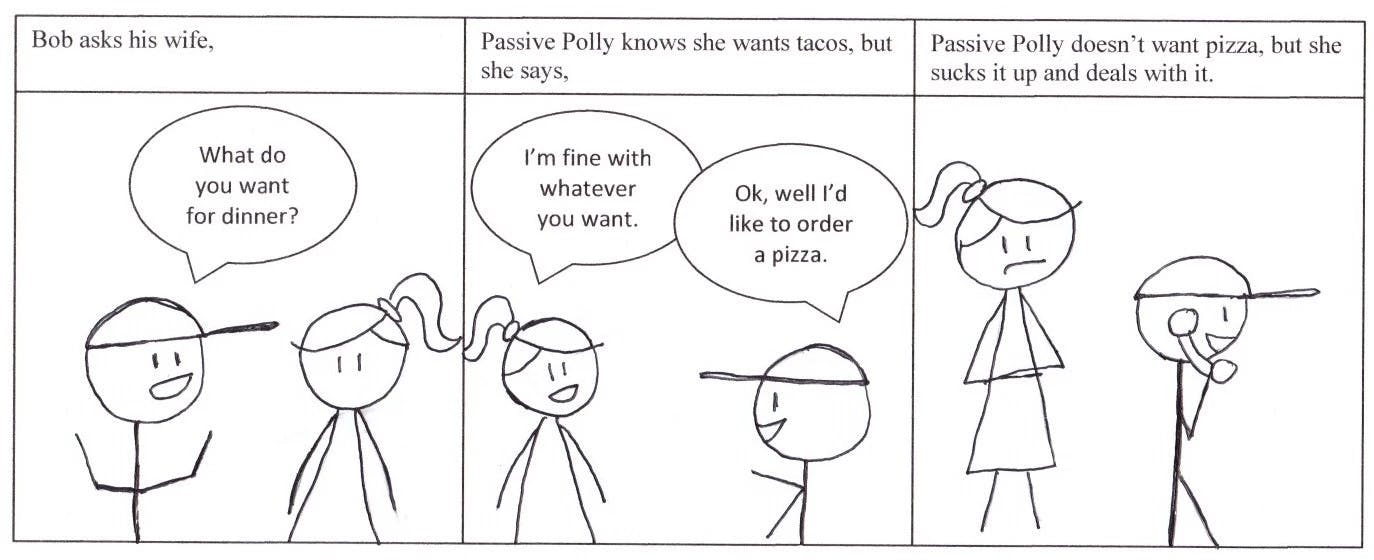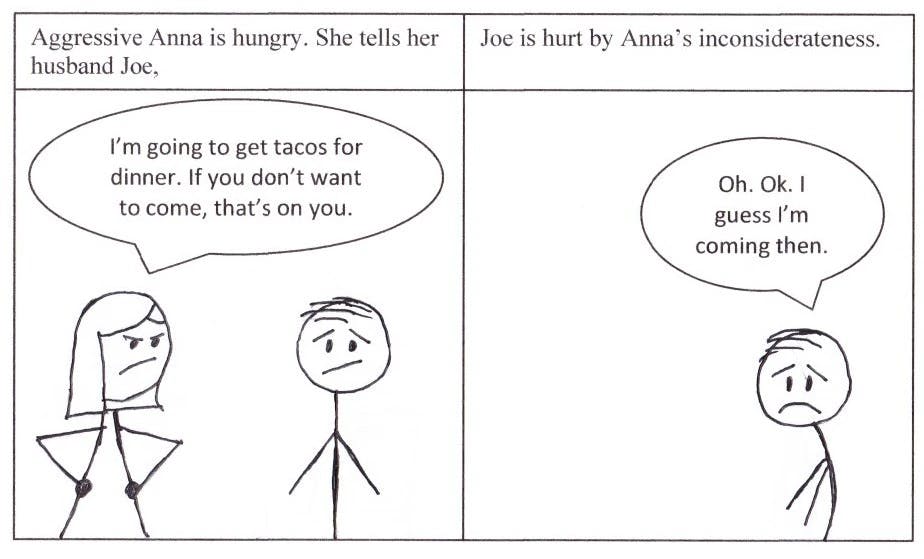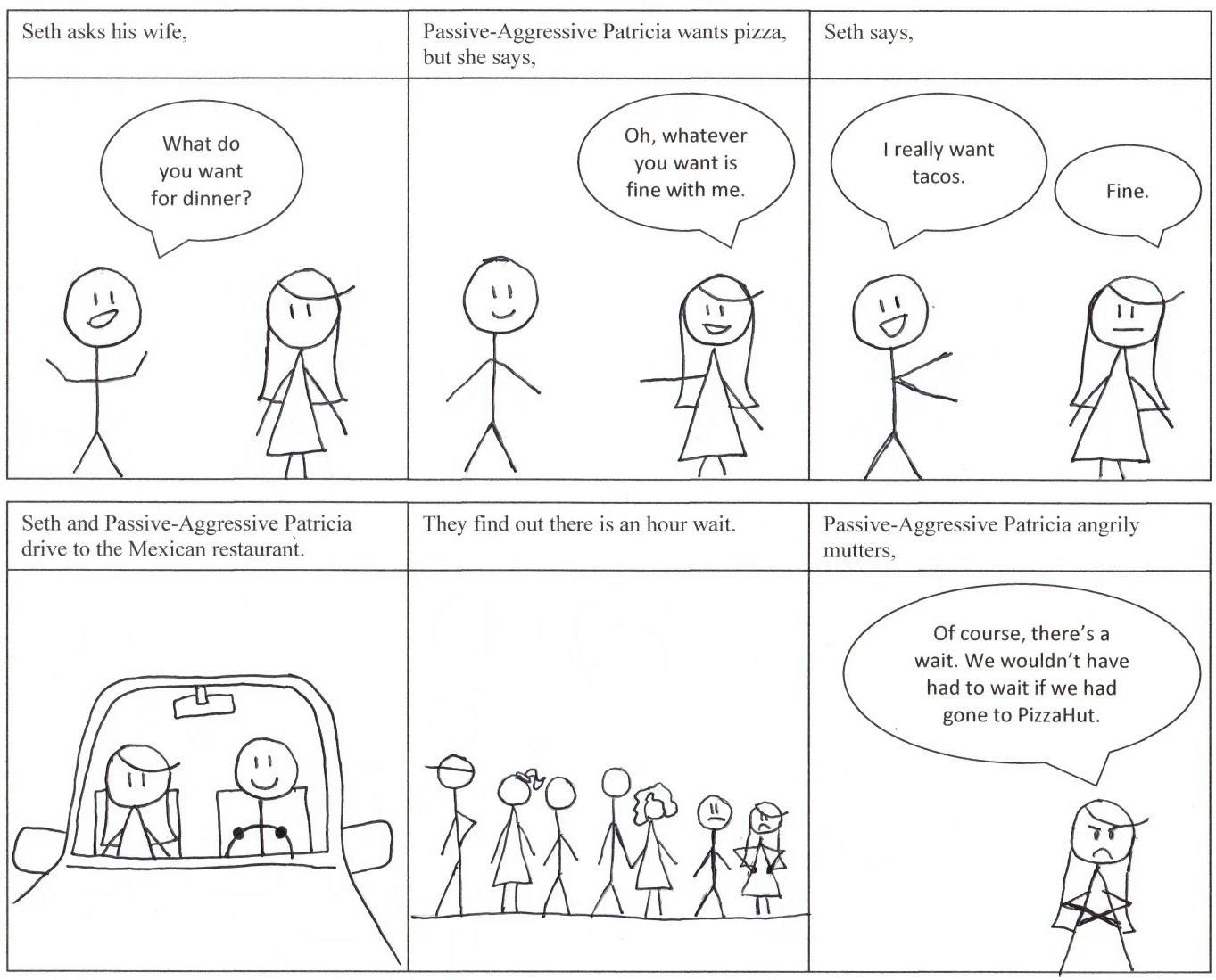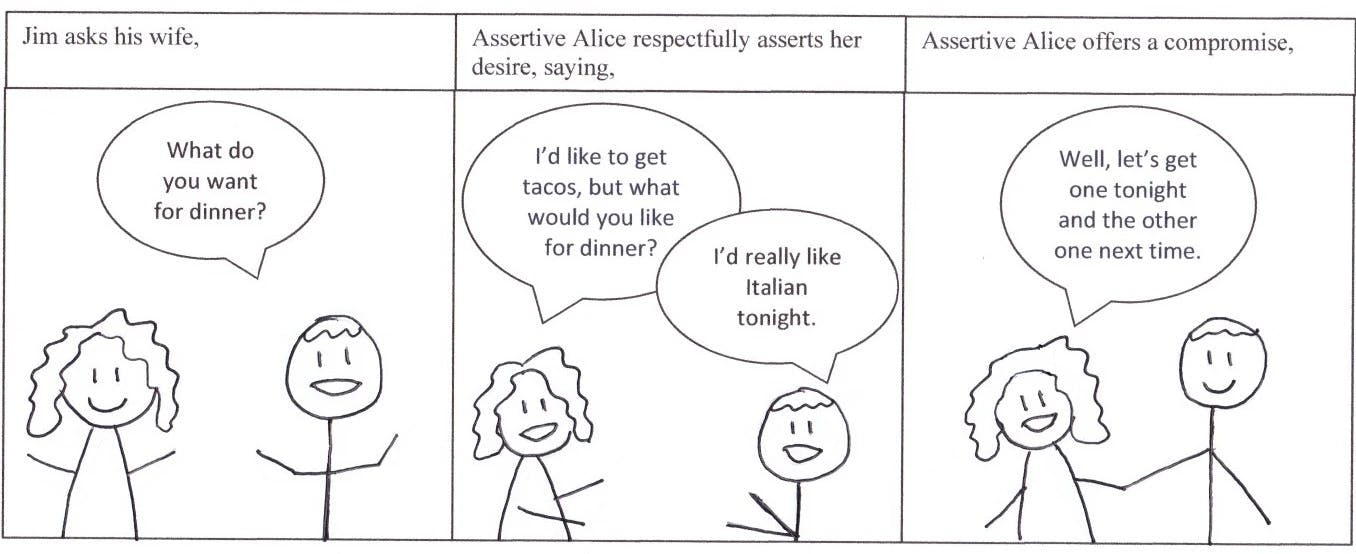How You Communicate Reveals What You Think About Yourself
Poor communication is the running joke in my family. Even as a child I realized my parents weren’t effective communicators, and their example formed me and my siblings. Now, whenever there is a communication breakdown in the family, we laugh ruefully at ourselves, and say, “Of course, it’s our thing.”

Now that I’m an adult with my own family, I’m working at being more aware of how I am (or am not) communicating. I’m blessed to have a husband who will good-humoredly call me out on mishandled communication opportunities (he’s basically the Mr. Knightley to my Emma, minus the age gap). So, slowly, I’m growing.
One of the helpful things for me was learning there were different ways to communicate, which range in healthiness and effectiveness. I could then reflect on what my default was (and what it should be). We tend to have a primary method of communication, which is an expression of internal scripts or fundamental beliefs we have about ourselves and our ability to get our needs met. Becoming aware of my default method of communicating revealed my internal scripts, which I realized weren’t always accurate or healthy.
Here’s a breakdown of the four basic types of communication:
Passive
The pushover. The nice guy. The doormat. These not-so-flattering labels are all attached to the passive style of communication. The passive person doesn’t voice their needs or desires and lets others make decisions for them. They know what their needs are, but they stay silent, usually from fear of confrontation or insecurities. They often speak softly, avoid eye contact, and have a shrinking body posture.
The passive person doesn’t voice their needs or desires and lets others make decisions for them.
When the passive style is someone’s habitual style of communication, it can lead to unhealthy behaviors. They will take as much as they can, and then explode, often overreacting to the triggering incident. They are often anxious or depressed because they feel a lack of control over their life and they aren’t getting their needs met.
A passive person’s internal scripts:
“No one takes my feelings into consideration.”
“No one respects me.”
“I can’t stand up for myself.”
“I want to avoid conflict at all costs.”
Some people are more passive because it’s just their personality — they’re naturally more easy-going. As long as they can voice their needs when they want or need to, then there’s nothing wrong with going with the flow. And there are situations in which taking a passive role is appropriate. For example, if your husband comes home in a bad mood because traffic was just the worst, then bringing up whose parents you want to spend Christmas with can wait. Or, if your friend has good news, you can hold on to your own for another conversation so as to not steal their spotlight.

Aggressive
Like passiveness, aggressiveness has it’s appropriate and inappropriate expressions. Inappropriate aggressive communication happens when a person speaks or acts for their own needs and desires at the cost of other people’s needs or rights. This can range from selfishness to narcissism to intimidation to being physically or verbally abusive. Aggressive communication is often marked by speaking loudly, interrupting, loss of temper, and criticizing, humiliating, and blaming others.
Aggressive communication is often marked by speaking loudly, interrupting, loss of temper, and criticizing, humiliating, and blaming others.
Sometimes aggressiveness is grounded in fear or insecurity — the person feels threatened and so they act out. Or, they don’t want to face their fears or insecurities, so they avoid taking responsibility for themselves and put the blame on others. This has two results: one, the person can’t grow and mature because of a lack of reflection and ownership, and two, they will alienate themselves and drive others away.
An aggressive person’s internal scripts:
“I have to get my needs met at the cost of everyone else.”
“It’s your fault, not mine.”
“I’m right and you’re wrong.”
“You owe me.”
“I can boss you around.”
There are some situations where it could be appropriate to communicate aggressively. We might need to make ourselves seen or heard, such as when we’re defending ourselves or sending the message that we’re not to be messed with (like a kid might need to do at school to defend himself against a bully). Aggressive communication is also seen in athletic competition — think smack talk and verbal intimidation on the field or court.

Passive-Aggressive
The relationship killer. Passive-aggressiveness is never healthy and never effective! A passive-aggressive person will regularly appear one way on the surface (polite, satisfied, etc.), but is actually experiencing a different emotion inside (anger, resentment, bitterness, etc.). Because the passive-aggressive person feels incapable of directly asserting their needs or addressing an issue, they act out subtly or indirectly. Their tools for expressing their thoughts and emotions are sarcasm, sabotage, the silent treatment, muttering, talking behind your back, and saying one thing but doing another. The passive-aggressive person — like the passive person — usually stays silent from fear of confrontation or insecurity.
The passive-aggressive person — like the passive person — usually stays silent from fear of confrontation or insecurity.
The person who is habitually passive-aggressive will likely be holding onto a lot of anger and resentment because their needs often go unmet because they’re unvoiced. They have higher chances of experiencing anxiety and depression because they feel a lack of control over their lives. Their passive-aggressive style of communicating can cause conflicts that result from their lack of clear communication, which ultimately reinforces their fear that communicating will lead to conflict.
A passive-aggressive person’s internal scripts:
“I’m powerless to act so I sabotage.”
“I’m afraid to voice my needs so I hold resentment.”
“I can’t address this issue directly so I’ll use sarcasm or give the cold shoulder.”

Assertive
This is the healthiest and most effective method of communicating! When people are assertive, they are able to state their needs and desires clearly and respectfully, without violating the rights of other people. They can stand up for themselves, as well as listen to others and empathize with them.
They can stand up for themselves, as well as listen to others and empathize with them.
Assertive people take ownership of their actions. They act with agency and purpose. Because of this, they can grow and achieve maturity. This maturity is reflected in their body language — they are relaxed yet confident, can make eye contact, and speak calmly. Their ability to respect and empathize with others allows them to make connections with others.
An assertive person’s internal scripts:
“I’m responsible for me, my needs, and my life.”
“I can calmly and respectfully voice my needs.”
“I respect you and your needs.”
“I can compromise.”
“I can empathize.”

Closing Thoughts
Gaining self-awareness about your default communication method can help you break bad habits and grow in healthy ones. Having this information is like having more tools in your toolbox — you can better craft the life and relationships you want.